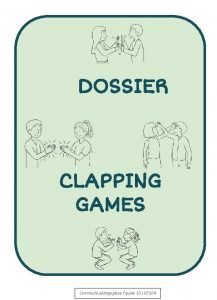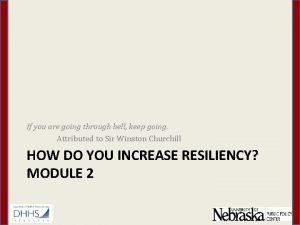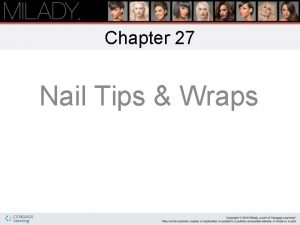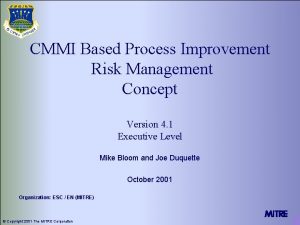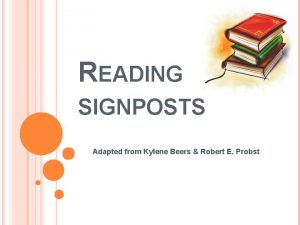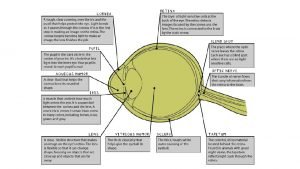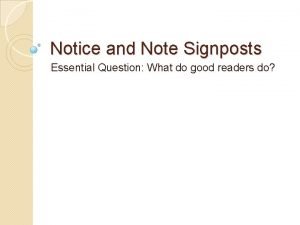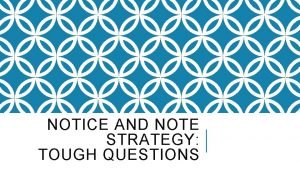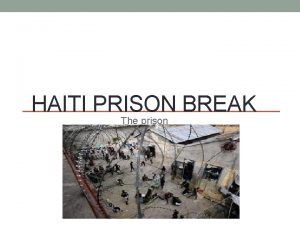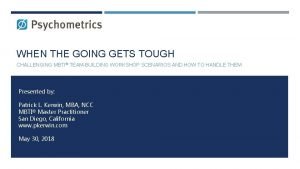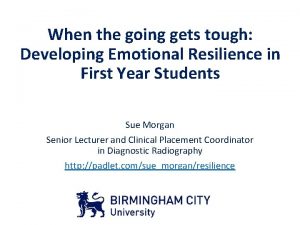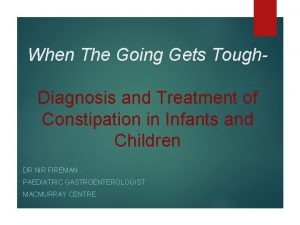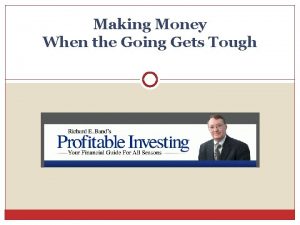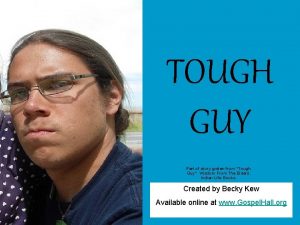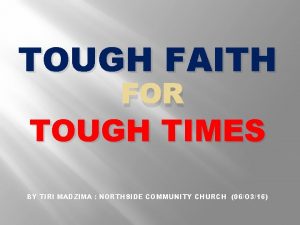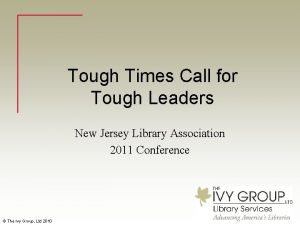When the going gets tough Prison Officer Summer



















- Slides: 19

When the going gets tough… Prison Officer Summer Symposium Keble College Oxford 14 th-15 th August 2017 Presented by Professor Jo Clarke

Individual Resilience (with thanks to Jasmine James) • Relative resistance to environmental risk experiences, or the overcoming of stress or adversity. ” Rutter (2007). • A universal capacity to cope with change and bounce back from adversity (Grothberg, 1997). • A process affected through various factors including: • attainment and sustainment of positive relationships (connectedness) • The ability to create and execute realistic plans, to problem solve and to manage strong impulses (competence and contribution). • A positive self-concept


Why is resilience important? A Critical Occupation One where there is high risk of exposure to traumatic events or material that may, under certain circumstances, exert critical impact on the psychological well-being of those within it (Paton & Violanti, 1996) Members of critical occupations also pay a critical role in protecting the communities they serve

When the going gets tough…. The tough WAKE UP

Presence of mind

Absent minded

Lost mind

Out of mind

Top tips for Presence of Mind • What’s • Important • Now • Be in the room you’re in


Model of Dynamic Adaptation: Points on Intervention (Clarke 2004) Intervention 2 Negative Psychological Outcome Intervention 1 Intervention 3 Intervention 4

Exercise • In small groups of 4 or 5, discuss the costs of your work. What is the personal impact on the job on your emotional, physical, mental health? What are the signs for you that work is having a negative impact?

Model of Dynamic Adaptation: Points on Intervention (Clarke 2004) Intervention 2 Positive Psychological Outcome Negative Psychological Outcome Intervention 1 Intervention 3 Intervention 4

Exercise • In small groups of 4 or 5, discuss the costs of your work. What is the personal impact on the job on your emotional, physical, mental health? What are the first signs for you that work is having a negative impact? • In small groups of 4 or 5, discuss the rewards of your work. What do you love? What is the impact on your emotional, physical and mental health? What are the first signs for you that work is having a positive impact?

Model of Dynamic Adaptation: Points on Intervention (Clarke 2004) Intervention 2 Positive Psychological Outcome Static Factors Critical Occupation Negative Psychological Outcome Stable Factors Dynamic Factors Intervention 1 Intervention 3 Intervention 4

Levels of Intervention • Primary (Intervention Points 1 & 2) • Aims to promote good psychological health and requires action on its determinants to prevent dysfunctional outcome • Secondary (Intervention Points 2 & 3) • Involves early detection of dysfunctional outcome, followed by appropriate intervention • Tertiary (Intervention Point 4) • Aims to reduce the impact of dysfunctional outcome and promote quality of live through active rehabilitation

For the rest of the session (except 10 mins wrap up) • Discuss a range of strategies/actions/things to do that could help build resilience in your team/wing/unit • Try to identify examples of primary, secondary and tertiary strategies that could be used at intervention points 1, 2 and 3 • Recognise that some of the easiest and cheapest (even free) strategies, might be the most effective • Don’t be put off by ideas that might cost money. Where resilience if concerned there may well have to be a spend to save

Some inspiration • Richard Branson • Look after your staff, they’ll look after your customers - and stay loyal to your company • Julian Richer (Richer Sounds) • A happy workforce supplies good customer service, boosts sales, decreases complaints, and eradicates theft and absenteeism.
 Tic tac toe going high going low going criss cross lollipop
Tic tac toe going high going low going criss cross lollipop Prison officer vetting forum
Prison officer vetting forum Beep test prison officer
Beep test prison officer If you are going through hell, keep going
If you are going through hell, keep going Pre molded nails shaped from a tough polymer
Pre molded nails shaped from a tough polymer Careless neglect often resulting in injury
Careless neglect often resulting in injury I take it you already know
I take it you already know Tough outer covering of bone
Tough outer covering of bone Again and again signpost picture books
Again and again signpost picture books Can you identify these cell structures
Can you identify these cell structures Cmmi risk management
Cmmi risk management Tough questions anchor chart
Tough questions anchor chart Tough background
Tough background What are the 6 signposts
What are the 6 signposts Thick, clear jelly that helps give the eyeball its shape.
Thick, clear jelly that helps give the eyeball its shape. Americanization is tough on macho
Americanization is tough on macho Notice and note signposts
Notice and note signposts Notice and note tough questions
Notice and note tough questions Mark tame
Mark tame Token economy in psychology
Token economy in psychology
